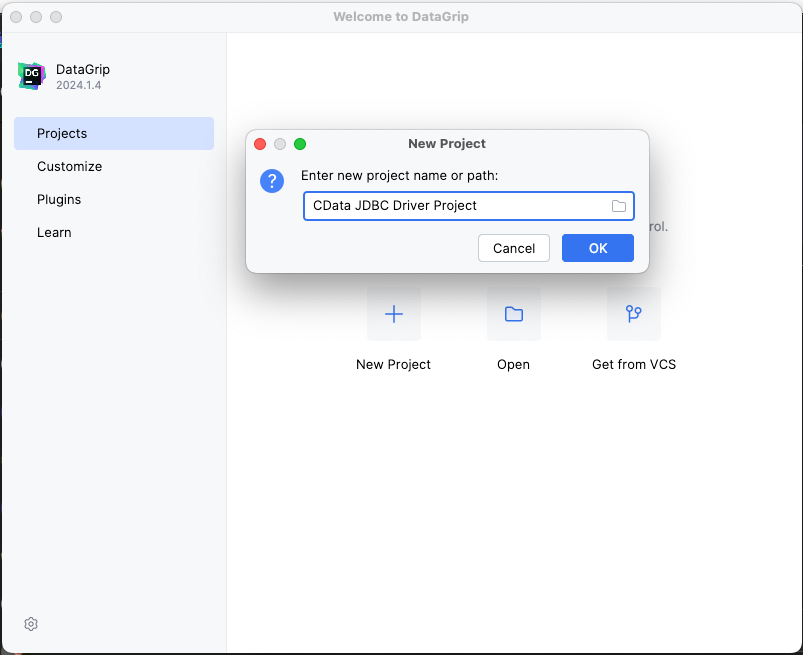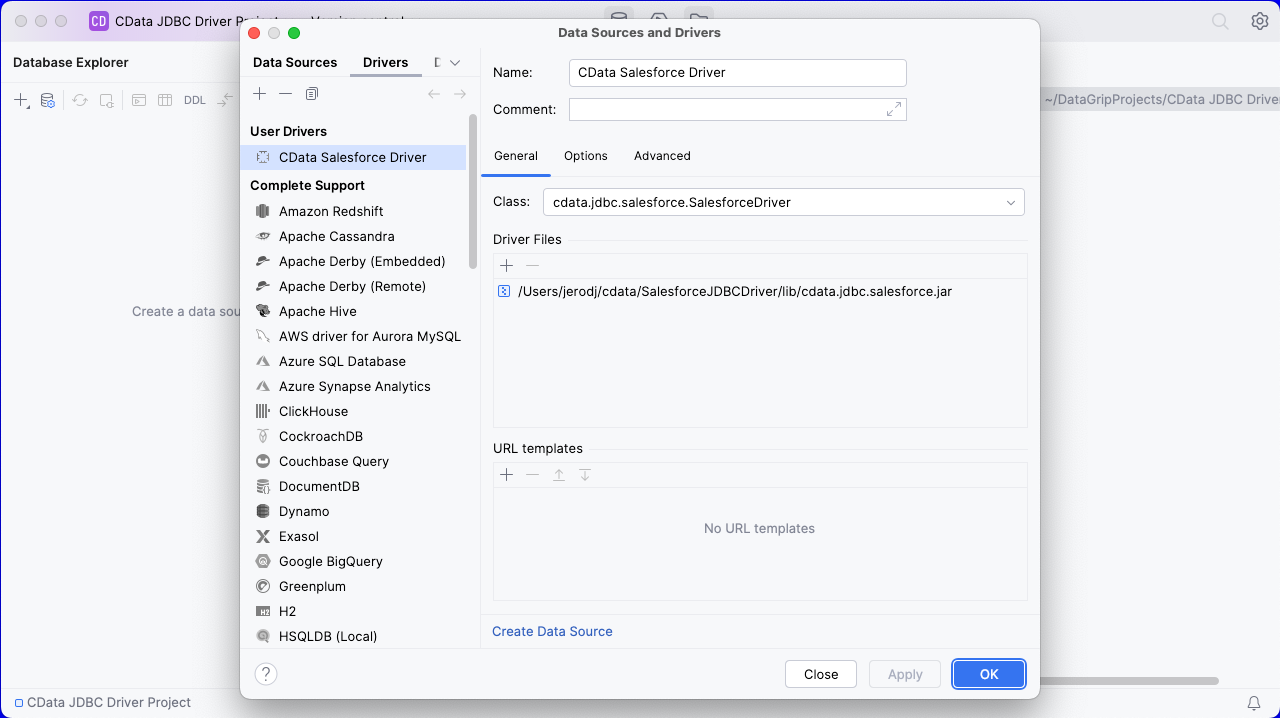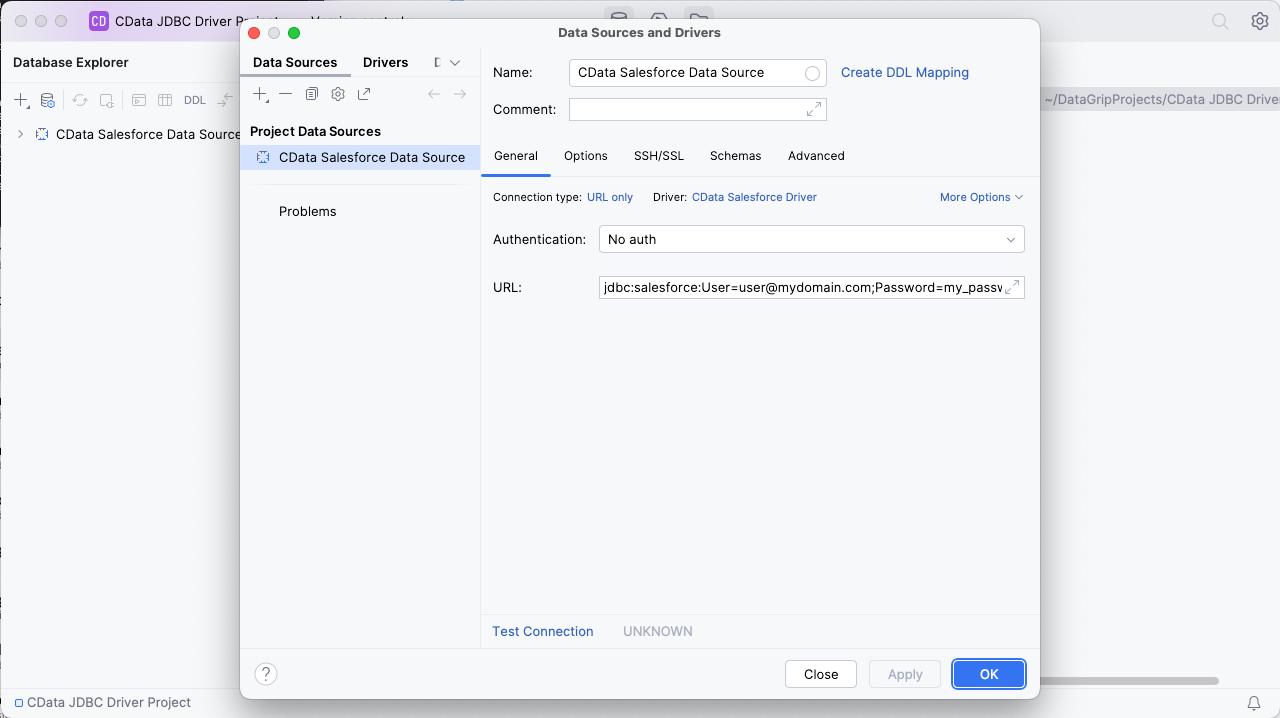Discover how a bimodal integration strategy can address the major data management challenges facing your organization today.
Get the Report →Query Epicor Kinetic Data in DataGrip
Create a Data Source for Epicor Kinetic in DataGrip and use SQL to query live Epicor Kinetic data.
DataGrip is a database IDE that allows SQL developers to query, create, and manage databases. When paired with the CData JDBC Driver for Epicor Kinetic, DataGrip can work with live Epicor Kinetic data. This article shows how to establish a connection to Epicor Kinetic data in DataGrip and use the table editor to load Epicor Kinetic data.
Create a New Driver Definition for Epicor Kinetic
The steps below describe how to create a new Data Source in DataGrip for Epicor Kinetic.
- In DataGrip, click File -> New > Project and name the project
![Creating a new DataGrip project.]()
- In the Database Explorer, click the plus icon () and select Driver.
![Adding a new Driver.]()
- In the Driver tab:
- Set Name to a user-friendly name (e.g. "CData Epicor Kinetic Driver")
- Set Driver Files to the appropriate JAR file. To add the file, click the plus (), select "Add Files," navigate to the "lib" folder in the driver's installation directory and select the JAR file (e.g. cdata.jdbc.epicorkinetic.jar).
- Set Class to cdata.jdbc.epicorkinetic.epicorKinetic.jar
Additionally, in the advanced tab you can change driver properties and some other settings like VM Options, VM environment, VM home path, DBMS, etc - For most cases, change the DBMS type to "Unknown" in Expert options to avoid native SQL Server queries (Transact-SQL), which might result in an invalid function error
- Click "Apply" then "OK" to save the Connection
![A configured Driver (Salesforce is shown).]()
Configure a Connection to Epicor Kinetic
- Once the connection is saved, click the plus (), then "Data Source" then "CData Epicor Kinetic Driver" to create a new Epicor Kinetic Data Source.
- In the new window, configure the connection to Epicor Kinetic with a JDBC URL.
Built-in Connection String Designer
For assistance in constructing the JDBC URL, use the connection string designer built into the Epicor Kinetic JDBC Driver. Either double-click the JAR file or execute the jar file from the command-line.
java -jar cdata.jdbc.epicorkinetic.jarFill in the connection properties and copy the connection string to the clipboard.
To successfully connect to your ERP instance, you must specify the following connection properties:
- Url:the URL of the server hosting your ERP instance. For example, https://myserver.EpicorSaaS.com
- ERPInstance: the name of your ERP instance.
- User: the username of your account.
- Password: the password of your account.
- Service: the service you want to retrieve data from. For example, BaqSvc.
In addition, you may also set the optional connection properties:
- ApiKey: An optional key that may be required for connection to some services depending on your account configuration.
- ApiVersion: Defaults to v1. May be set to v2 to use the newer Epicor API.
- Company: Required if you set the ApiVersion to v2.
![Using the built-in connection string designer to generate a JDBC URL (Salesforce is shown.)]()
- Set URL to the connection string, e.g.,
jdbc:epicorkinetic:Service=Erp.BO.CustomerSvc;ERPInstance=MyInstance;URL=https://myaccount.epicorsaas.com;User=username;Password=password;InitiateOAuth=GETANDREFRESH - Click "Apply" and "OK" to save the connection string
![A configured Data Source (Salesforce is shown).]()
At this point, you will see the data source in the Data Explorer.
Execute SQL Queries Against Epicor Kinetic
To browse through the Epicor Kinetic entities (available as tables) accessible through the JDBC Driver, expand the Data Source.
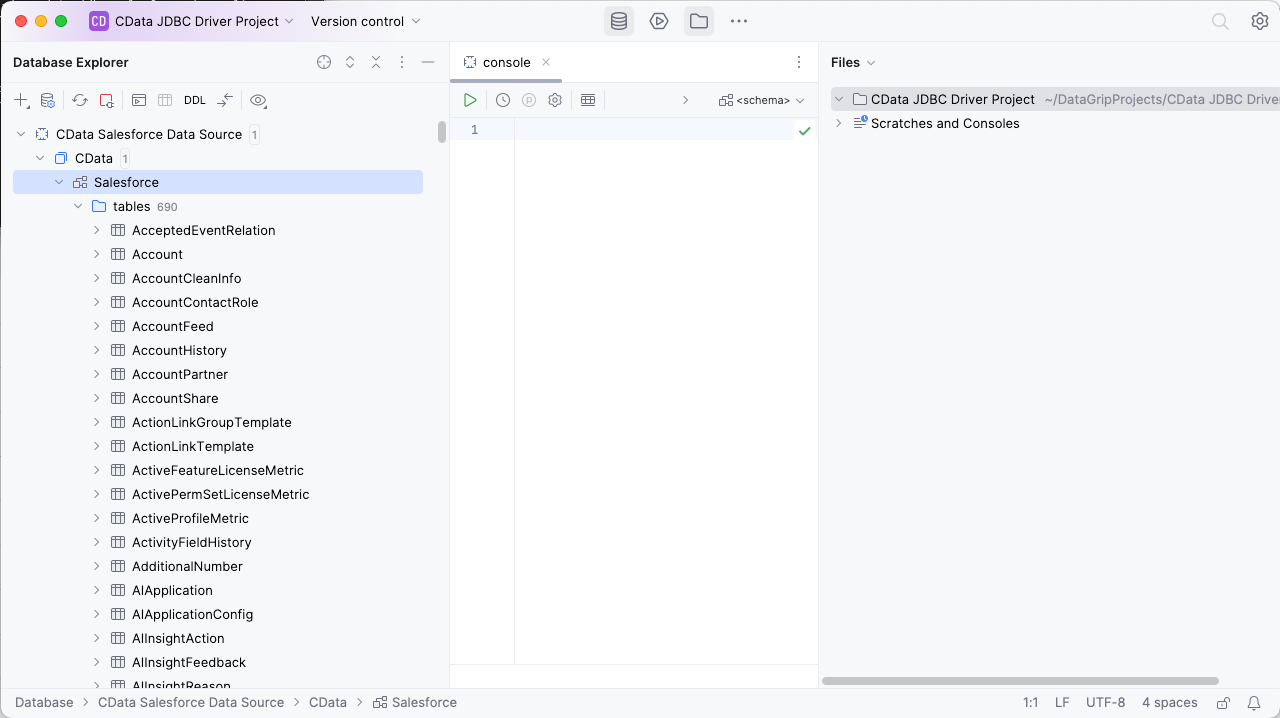
To execute queries, right click on any table and select "New" -> "Query Console."
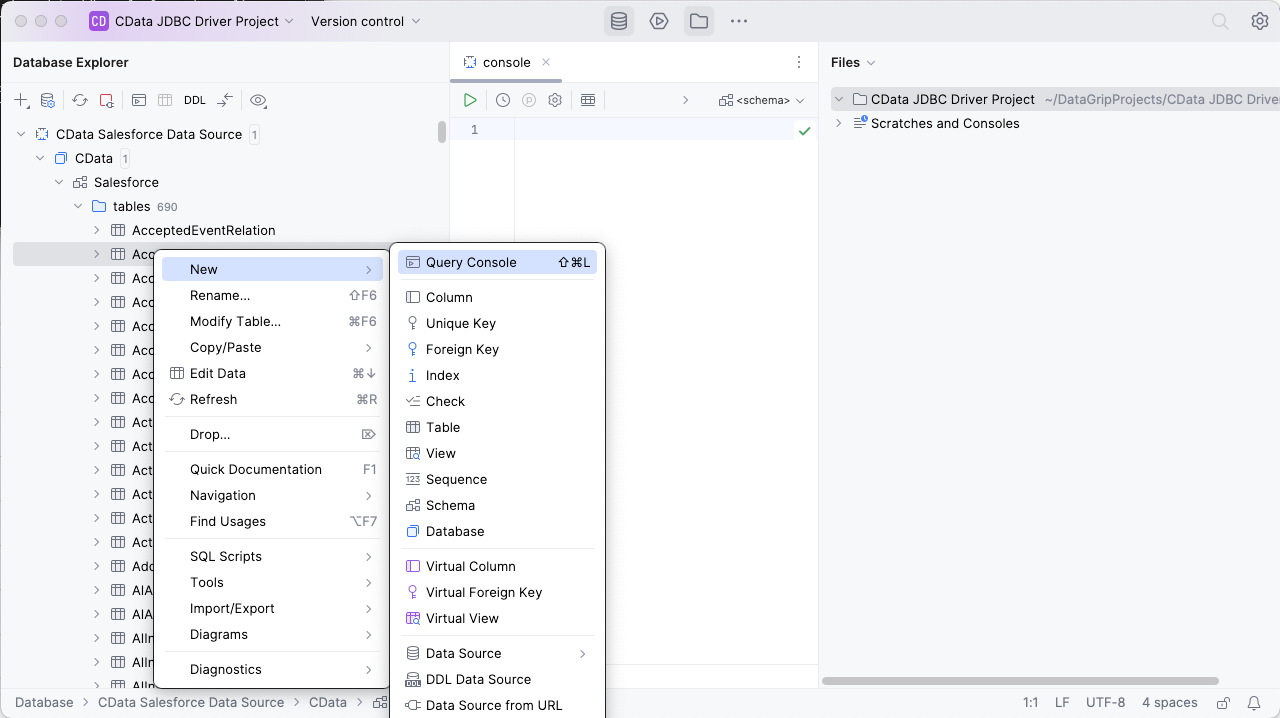
In the Console, write the SQL query you wish to execute. For example: SELECT CustNum, Company FROM Customers WHERE CompanyName = 'CompanyName'

Download a free, 30-day trial of the CData JDBC Driver for Epicor Kinetic and start working with your live Epicor Kinetic data in DataGrip. Reach out to our Support Team if you have any questions.






